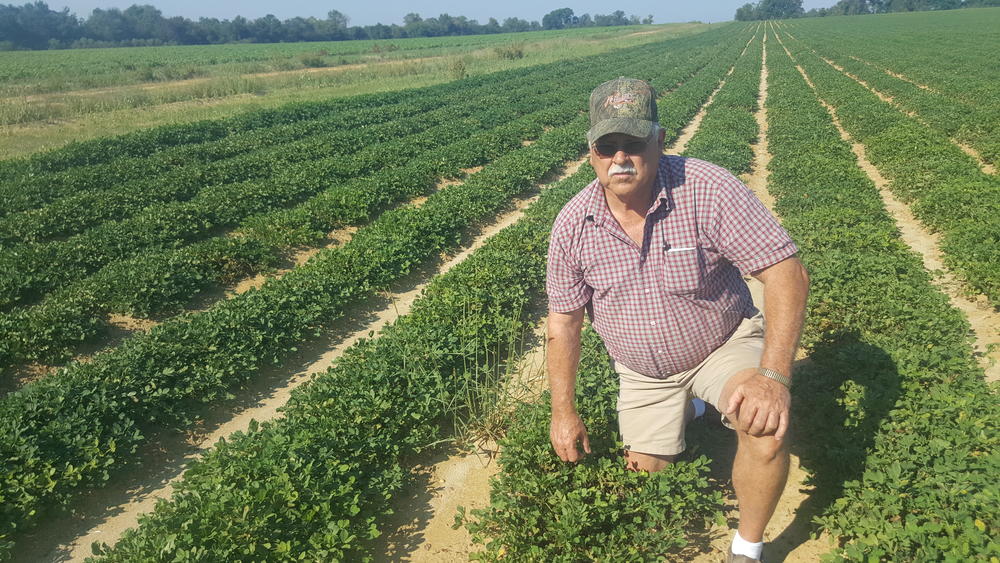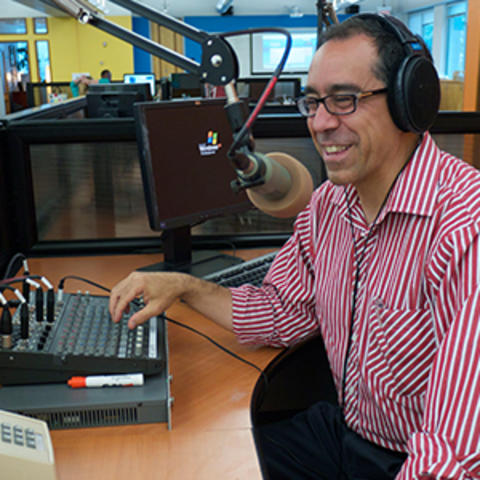Section Branding
Header Content
Peanut Harvest Hurt By Hot, Dry Summer
Primary Content
Rodney Dawson stood in his peanut field off of Route One-Twelve in Hawkinsville. In a normal year, the vines would be knee-high and the foliage would fully cover the dirt. But Dawson says this year is not normal. In fact, it’s one of the worst in his 30-plus years of growing peanuts.
“Right here we see distressed plants,” said Rodney Dawson, who is also a board member for the Georgia Peanut Commission. “There (is) a lot of yellow tint to them, where they should be lush and green.”
Dawson said there’s nothing left to harvest, as he bent down to clear away some dry plants to pull one up.
“See how that's just nothing but a pod,” he said, examining the plant. “There’s nothing in there, nothing mature.”
Georgia produces more peanuts than any other state. According to the Georgia Peanut Commission, peanut farming is a $1.3 billion business. But as farmers finish their harvest, it’s apparent that a hot, dry summer has dealt a blow to the state's peanut crop. This is especially true for farmers who don’t irrigate their fields.
Dawson will plow under the non-irrigated, or dryland, section of his crop. He’s not the only farmer in this situation. Scott Monfort , agronomist for the University of Georgia's Cooperative Extension, said he talked to another Middle Georgia farmer in a similar situation.
“He does all dryland. Two-hundred acres of dryland. And he said this is first time in 20 years he's not going to put a single peanut in the trailer,” Monfort said.
Monfort blamed it all on “this long period of high heat and no rain through July and August. For some people it lasted as long as eight weeks without a single drop of rain.”
Monfort says there have been years with scarce rainfall in the past, but only in pockets around the state. That’s not the case this year.
“We’re talking statewide,” he said. “And so you, you couple the no rain with the high temperatures both night time and day time. And it's just awful.”
Peanut fields without irrigation make up about 40 percent of the state's output. Don McGough, commodities director for the Georgia Farm Bureau, said the drought allows pests to thrive such as spider mites and the lesser cornstalk borer.
“That's an insect that gets actually in the in the branch part, limb part of the peanut plant, and bores a hole and really, really hurts yields,” said McGough.
Pesticides used to battle the lesser cornstalk borer can’t penetrate the soil without rainfall, said Don Koehler, executive director of the Georgia Peanut Commission.
Irrigated peanut fields have fared better. But Don Koehler of the Georgia Peanut Commission said the hot, dry summer will even reduce yields in those plants. Koehler explained that the peanut plant bloom and pollinate during July, which was one of the hottest on record.
“The blooms weren't as heavy as, normally, you should expect on a plant because of the hot weather,” Koehler said. “And pollination was hindered by some of the hot weather in July as well.”
Koehler and the other experts say that the reduced peanut crop will not affect the consumer price of peanuts, at least this year. There had been a glut of peanuts on the market, which has hit the farmer in the wallet. Now it’s a drought that could take a toll on peanut farmers.
“This is a big deal,” Koehler said. “It's something that is going to impact some farmers and there may be some that don't survive the 2016 drought.”
Support for health, education and poverty reporting on GPB Macon comes from the Peyton Anderson Foundation.


